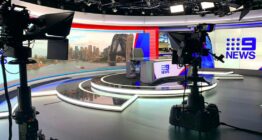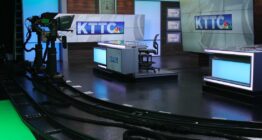Industry Insights: Studio robotics and camera control, part two

Subscribe to NCS for the latest news, project case studies and product announcements in broadcast technology, creative design and engineering delivered to your inbox.
Earlier this year, we spoke to vendors and manufacturers related to studio robotic camera systems.
This Industry Insights roundtable looks at new technologies impacting studio robotics along with product roadmaps.
The next part in this series will look at camera tracking, another core piece of studio technology that allows creative freedom for virtual production.
How does IP production continue to influence your roadmap and products?
Jeanette Dahl Torsvik, head of marketing, Electric Friends: We have integrated our systems with new IP products, such as NDI for PTZ cameras, and are always trying to be up to date with new technologies.
Karen Walker, VP of camera motion systems, Ross Video: Native IP-based control is now standard. We see more developments in the aggregation of the cables to the robotics, and we continue to make this easier while improving cable management. As for SMPTE 2110 standards, one can imagine in the longer term how these will make it much easier to do things like video analytics, capture and store thumbnails, and integrate video into control systems. In the future, IP video will enable new control system features and architectures that take advantage of the ability to route the video anywhere.
Michael Cuomo, VP, Telemetrics: When we released our S5 series of pan-tilt heads we included network trunk for remote control of cameras, and now it is even more useful with IP video.
Paddy Taylor, head of broadcast, Mark Roberts Motion Control: We have moved to a complete IP model that allows our users to implement a low-cost infrastructure and move to a one-to-many model. For example, our IP Pan Bars are designed to allow a remote operator to have the natural feel of controlling a camera in a traditional way. By placing a monitor or viewfinder on top of the pan bars, the extremely low latency control over IP means an operator can be located anywhere with an internet connection and take control of any camera connected to the system.
James Eddershaw, managing director, Shotoku: With several all-IP deployments completed already we do see some interesting product development opportunities to adopt more IP production interfaces, although the core technology of a robotics system is not directly impacted.
How are you considering leading-edge technologies like machine learning for your products?
Jeanette Dahl Torsvik: Machine-controlled cameras will soon be important in most genres for TV production.
Michael Geissler, CEO, Mo-Sys: Mo-Sys has machine learning R&D staff looking into a wide range of applications for virtual production.
Karen Walker: Ross already has a machine learning software feature available that can be used on our robotic camera solutions. As the technology improves and is more accepted, there will be new developments in this area to make robotics smarter and move more like they would if a camera operator was controlling them.
Michael Cuomo: AI and machine learning is at the core of our reframe Automatic Shot Correction technology, and we are continuously updating that software with new features on a regular basis. For complex moves like hands-free talent tracking, machine learning makes that more accurate and reliable over time.
Paddy Taylor: We are already delivering products that incorporate machine learning around camera movement and talent, tracking. As computing power continues to increase, we will evolve these solutions to do more.
James Eddershaw: ML and AI technologies will become increasingly important in the potentially fully-automated operatorless production environment of the future. Key to that application are face and body tracking systems like our AutoFrame. With this technology it’s already possible to leave the robotics system to follow the anchor or guest with minimal human intervention on simpler productions. With more advanced AI and ML it will become possible to leave the production entirely automated, even on shows with less predictability and when more dynamic camera movements are needed.
Subscribe to NCS for the latest news, project case studies and product announcements in broadcast technology, creative design and engineering delivered to your inbox.








tags
Electric Friends, James Eddershaw, Jeanette Dahl Torsvik, Karen Walker, Michael Cuomo, Michael Geissler, Mo-Sys, MRMC, Paddy Taylor, Robotic Camera Control, robotic cameras, Ross Video, Shotoku Broadcast Systems, Telemetrics
categories
Broadcast Equipment, Camera Control & Camera Robotics, Featured, Industry Insights, Studio Technology, Voices